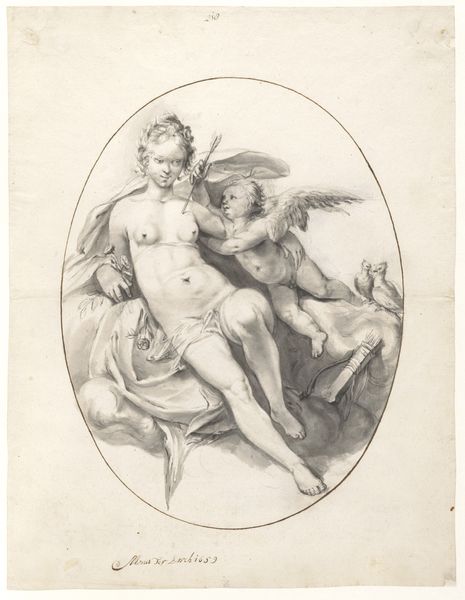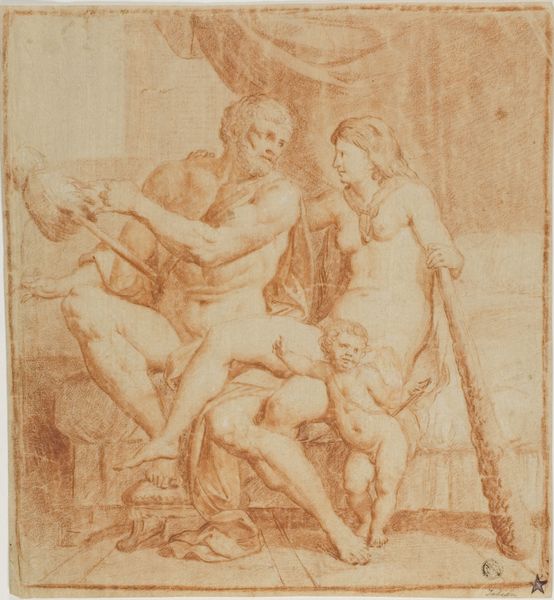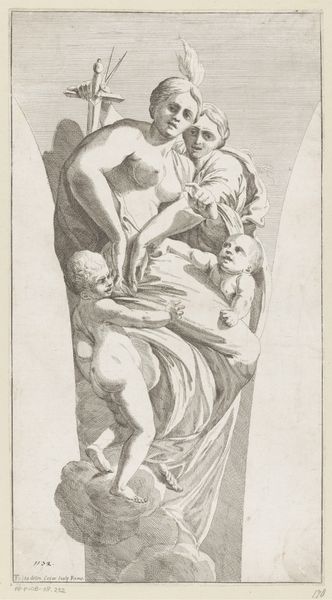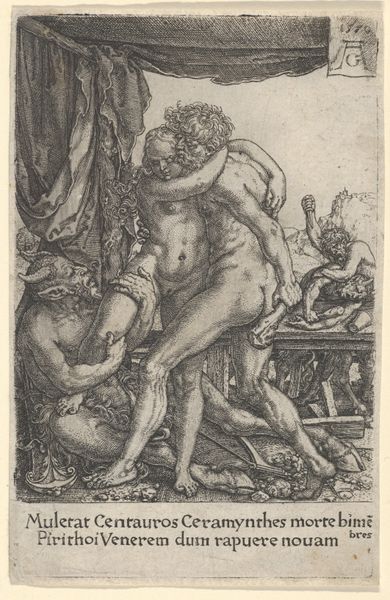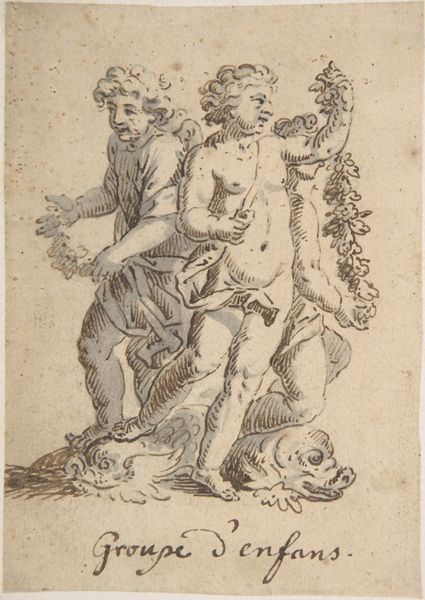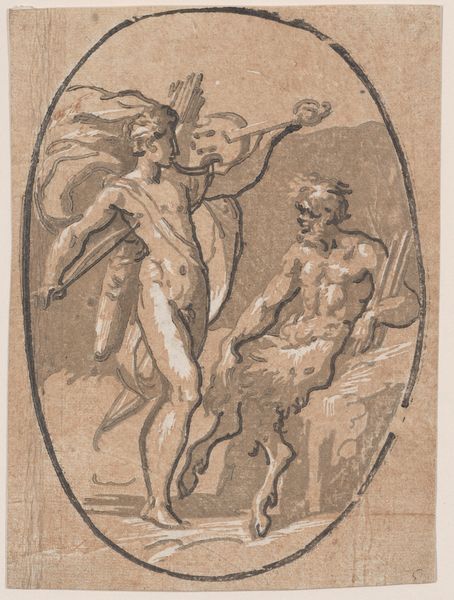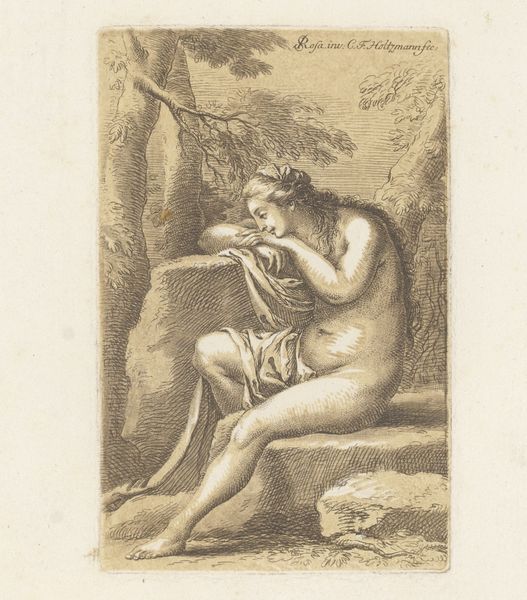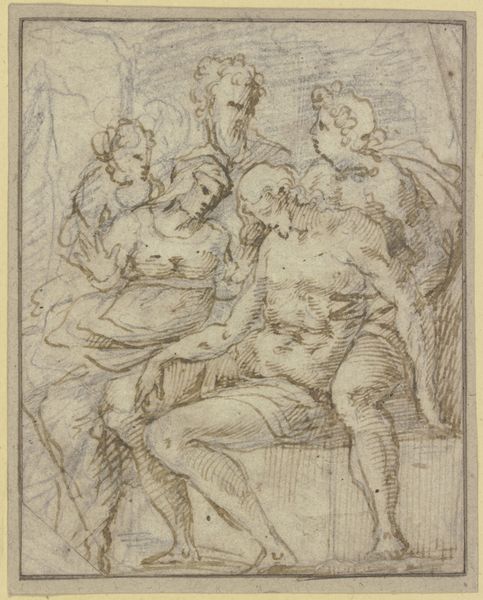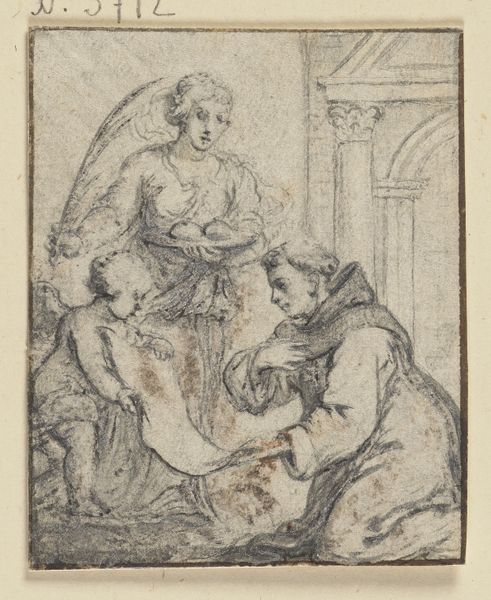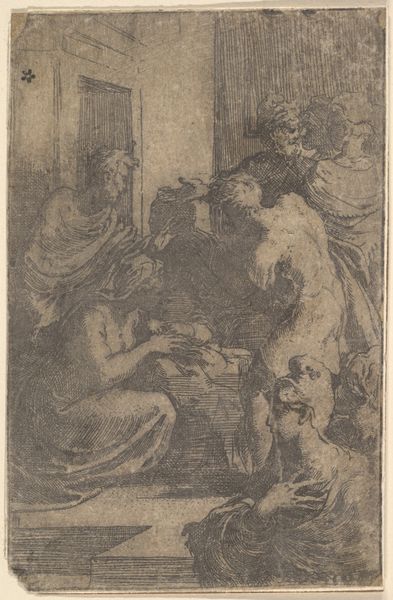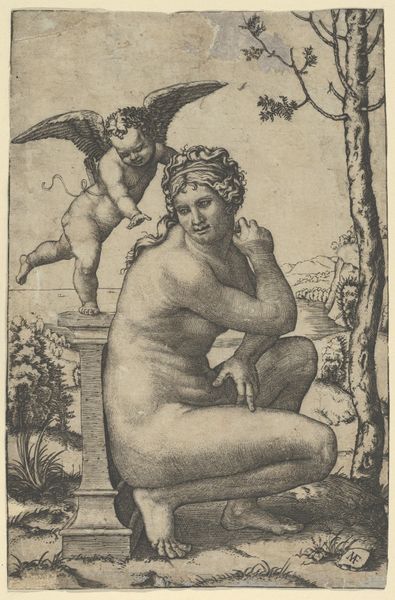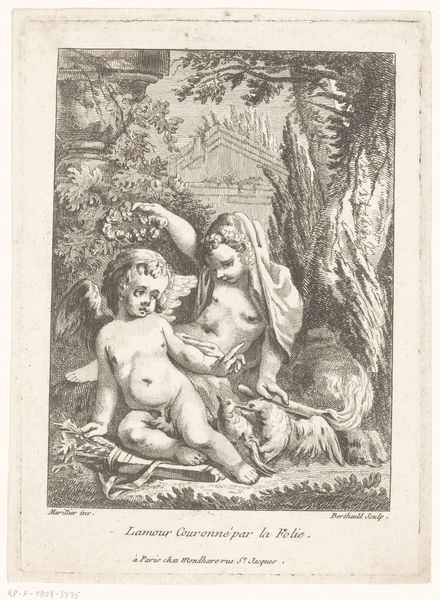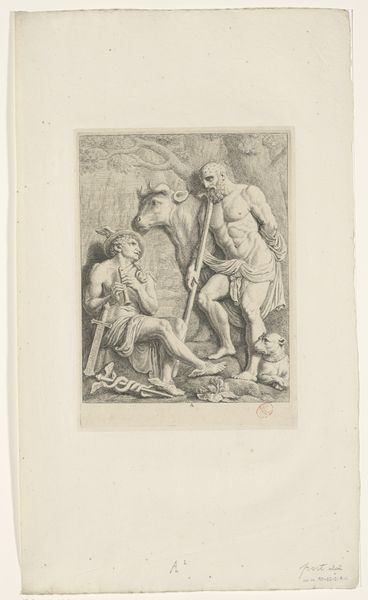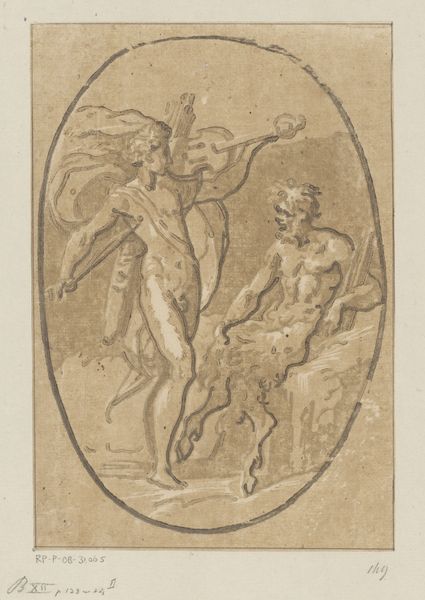
drawing, ink, chalk, charcoal
#
drawing
#
allegory
#
charcoal drawing
#
mannerism
#
figuration
#
11_renaissance
#
ink
#
cupid
#
pencil drawing
#
13_16th-century
#
chalk
#
line
#
charcoal
#
nude
Copyright: Public Domain
Editor: Here we have what's titled "Sitzende Venus und stehender Amor mit Schale" – Seated Venus and Standing Cupid with Bowl – a drawing attributed to Hans von Aachen. It’s rendered in charcoal, ink, and chalk. What strikes me is the somewhat melancholic expression on Venus's face, despite the presence of Cupid and the overall theme of love. What do you make of this apparent tension? Curator: That melancholic expression, as you observe, is fascinating. It disrupts a straightforward reading of idealized love and beauty. Think about the context: Mannerism, with its emphasis on artifice and distortion, often critiqued the established order. What happens if we see Venus not just as a goddess, but as a representation of feminine ideals burdened by societal expectations and constraints? Editor: So, the melancholy becomes a commentary on the pressures placed upon women? Curator: Precisely. Consider how female figures in art, especially during the Renaissance, were often objectified. Venus, the embodiment of beauty, is forever on display. Is Cupid offering her something comforting, or is he complicit in maintaining the structures that lead to her sadness? Is he trapping her within a system of constant evaluation based on beauty? Editor: That's a completely different way of viewing Cupid than the one I’m accustomed to. So this isn’t just a depiction of love, it's also about how women are objectified, then. Curator: Absolutely. And it pushes us to question the narratives we’ve inherited. Art isn't just about aesthetics; it’s a reflection of power dynamics and cultural values. Looking at it through a feminist lens, the piece seems less about celebrating love and more about deconstructing its problematic facets, opening a dialogue about women's experiences and objectification within broader socio-historical structures. Editor: I never considered the socio-historical background when approaching art in such a direct and narrative manner. Curator: That's where theory can empower us to look beyond surface appearances and excavate the hidden layers of meaning. I hope this opened you up to it more. Editor: I agree. I feel like I’ve uncovered a new set of tools for analysis!
Comments
No comments
Be the first to comment and join the conversation on the ultimate creative platform.
